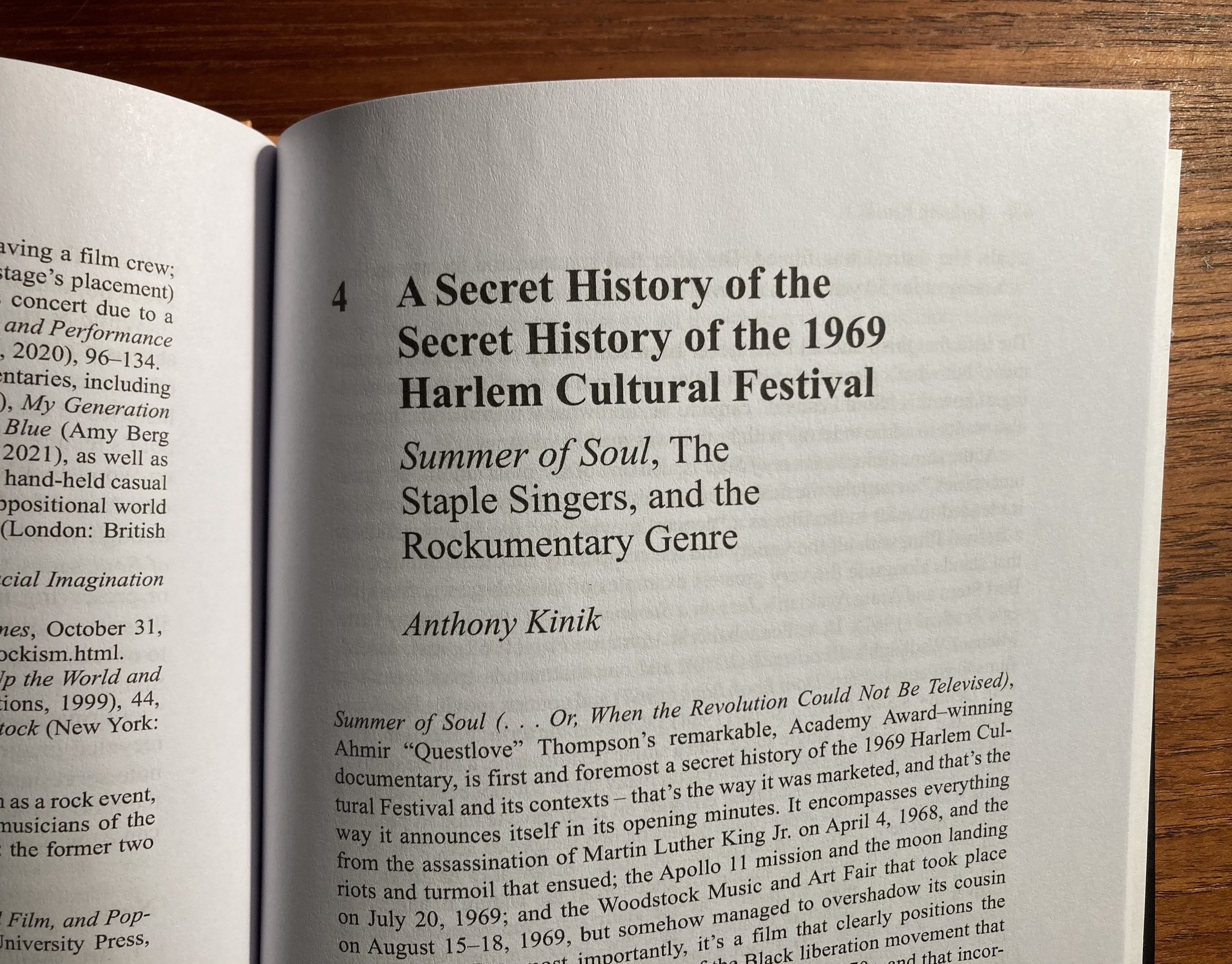fig. a: don’t judge this book by its cover
Very happy to be a part of this fine collection about this truly amazing film.
As the title page for my essay suggests,
fig. b: secret histories
my thoughts on the film were prompted in large part by Mahalia Jackson and Mavis Staples’ absolutely breathtaking duet of “Precious Lord” during the extended tribute to Martin Luther King, Jr.
fig. c: Mavis & Mahalia
I’ve seen Questlove’s film so many times now, and I still get goosebumps during that scene every single time. Anyway, that led to a consideration of the Staple Singers and their outsized role in the early history of the popular music documentary—Festival (1967), Soul to Soul (1971), Wattstax (1973), The Last Waltz (1978)—and how Summer of Soul, which documents the 1969 Harlem Cultural Festival, fits in with this body of work.
fig. d: Festival (1967)
fig. e: Soul to Soul (1971)
fig. f: Wattstax (1973)
fig. g: The Last Waltz ((1978)
fig. h: Summer of Soul (2021)
If you’d like to know more about this collection, you can find its webpage here.
If you’re a true devotee of Summer of Soul, you can order the book from the obvious multinational technology sources, but wouldn’t it be better to order it from a local, independent bookstore instead? Or just ask for it from your local library. If you happen to be in the vicinity of a university library, it should be pretty easy to track down.
aj











